Dipladenia, also called Mandevilla, is a climbing plant with spectacular flowers that brightens gardens and terraces. Want to multiply your Dipladenias and share them with friends? Propagation by cuttings is a simple, economical technique that will let you obtain new plants for free. Follow our detailed guide and discover all secrets for a successful cutting.
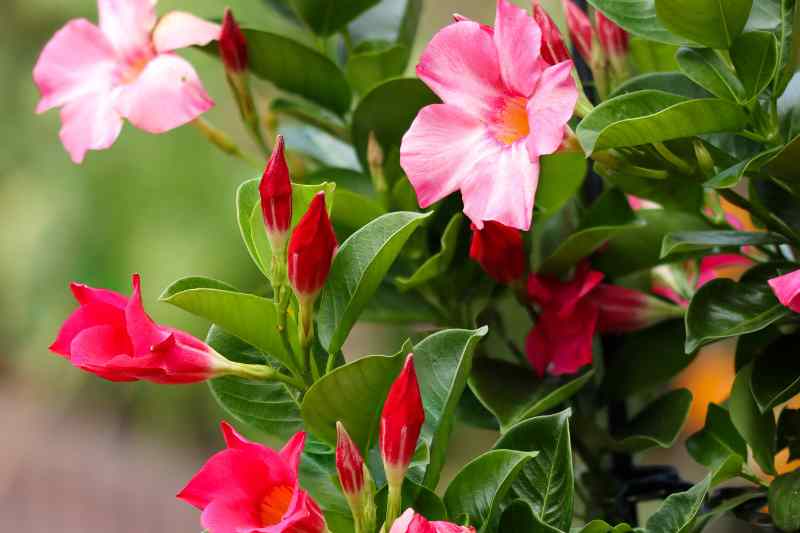
Quick overview of Dipladenia
Dipladenia, also known as Mandevilla, is a tropical climbing plant valued for its dramatic flowering and vigorous growth. Native to South America, this ornamental plant is prized for its large trumpet-shaped flowers, available in a range of vibrant colours such as red, pink, white and yellow. Its glossy, dark green, evergreen foliage adds to its appeal, making Dipladenia a popular choice for trellises, pergolas and as a container plant on terraces and balconies. Beyond its beauty, Dipladenia is known for resilience and ability to thrive in heat and drought once established.
Propagation by cuttings of Dipladenia offers several advantages, making it accessible even to amateur gardeners. This technique preserves specific characteristics of the parent plant, ensuring new plants faithfully reflect aesthetic and growth qualities of original specimens. Propagation by cuttings is also economical, avoiding purchase of new plants. Moreover, this method contributes to rapid spread of the plant, allowing gardeners to quickly fill outdoor space with these magnificent flowers.
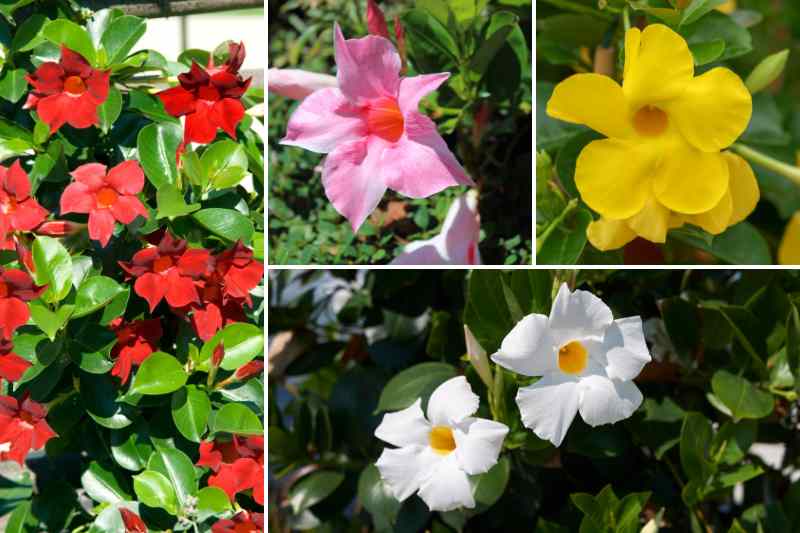
Selection and preparation of cuttings
Dipladenia is multiplied by herbaceous cuttings in May or semi-woody cuttings in August.
To take a cutting from a Dipladenia, choose young but sufficiently mature shoots, generally from current season's growth, showing healthy, vigorous growth. Ideal shoots are those without flowers, with several nodes (points where leaves emerge), as these areas favour formation of new roots. Prefer shoots from upper parts of the plant, as they receive better light and are often healthier and sturdier, increasing chances of success.
To prepare a Dipladenia cutting effectively, cut a healthy shoot about 10–15 cm long, using a clean, sharp pruning shear to make a clean cut just below a node. Remove lower leaves so they do not sit in water or rooting medium, leaving only a few leaves at the top to ensure photosynthesis. This preparation focuses cutting's energy on root formation while minimising risk of rot or disease.
Oli's little tip : to maximise cutting success, ensure cutting tools are clean and disinfected to prevent disease transmission and choose healthy, vigorous shoots as cuttings.
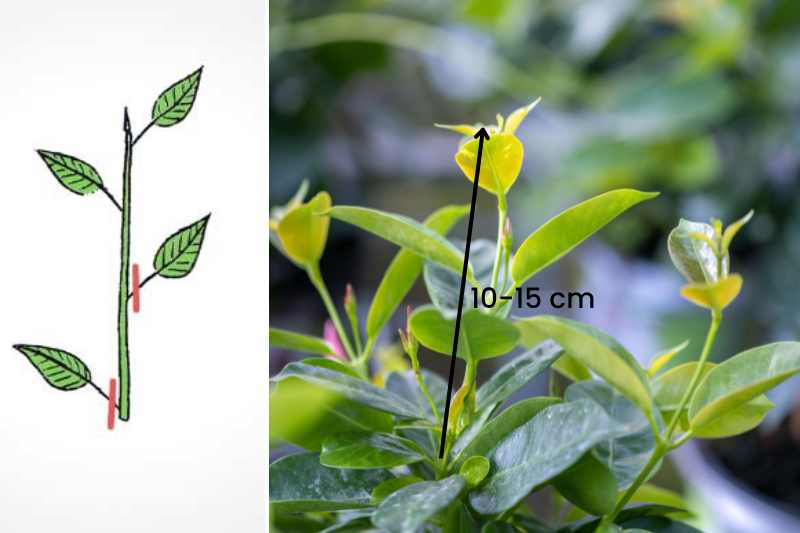
Cutting technique
Choice of rooting medium
Rooting of Dipladenia cuttings starts with selecting a light, well-drained compost, ideally a specific mix for cuttings that will promote aeration and the moisture needed for root development. Fill a pot with your medium, moistening it evenly before planting to create an environment favourable to rooting without waterlogging, which could cause cutting rot.
Planting the cuttings
When planting, gently insert cutting into compost to a depth sufficient for it to stand without support, generally up to the first remaining set of leaves. Firm compost lightly around base of cutting to remove air pockets and ensure good contact between cutting and compost, crucial for root initiation.
If taking several varieties, labelling each pot or container is essential to avoid mixing them up... well, the Dipladenias.
please note: Application of rooting plant hormone, although facultative, can significantly increase success by stimulating root growth. To use, dip cut end of cutting into hormone powder or solution before planting, which will encourage faster, stronger rooting.
Care of young cuttings
Watering
Water sparingly: compost should be kept moist but not waterlogged to avoid root rot. Light watering as soon as surface of compost begins to dry is often sufficient; adjust frequency according to ambient temperature and evaporation.
Position
Dipladenia or Mandevilla cuttings thrive in a bright, warm environment but without exposure to intense direct sun that could burn young shoots. Ideal temperature ranges from 20°C to 25°C, conditions under which growth is optimal. Avoid cold draughts or sudden temperature changes that could stress cuttings.
Big mistake! : a common error is neglecting importance of indirect light. Indeed, direct sun can desiccate cuttings, while lack of light weakens their growth.
Humidity level
High humidity helps rooting and growth of cuttings. You can increase humidity around cuttings by placing pot in a mini-greenhouse or covering pot with a clear plastic bag (bagged cutting), ensuring to ventilate regularly to prevent mould build-up. Make sure bag does not touch leaves to allow sufficient air circulation.
Constant vigilance
Regular monitoring of cuttings and young plants is essential to detect early signs of pests and diseases, which can seriously compromise their development and overall success. Act quickly by identifying and removing affected cuttings to protect health of other plants.
Potting on young cuttings
Dipladenia cuttings are ready to be potted on when clear signs of healthy growth appear, notably emergence of new leaves and development of a robust root system, usually a few weeks after planting. A clear indication that potting on time has come is when roots begin to show from base of cutting pot, meaning they are seeking room to expand. But don’t be too hasty!
To pot on young Dipladenia plants, start by preparing new pot. Choose a rich, well-drained compost to fill pots, ensuring they are large enough to accommodate future root growth. If planting outdoors, ensure soil is loosened and enriched with compost or well-rotted manure to encourage good establishment. Make a hole large enough to accept root ball without compression.
Carefully remove cutting from initial pot taking care not to damage roots. Place cutting in new pot or prepared hole, adjusting depth so base of stem is level with soil. Backfill with compost, firm gently around base to remove air pockets and water thoroughly to help roots establish in new environment.
Not too fast! Hardening of repotted cuttings to their new environment is crucial to minimise transplant shock, especially when moving from indoors to outdoors. This gradual transition over a week or two allows young plants to adapt progressively to variations in temperature, light and wind.
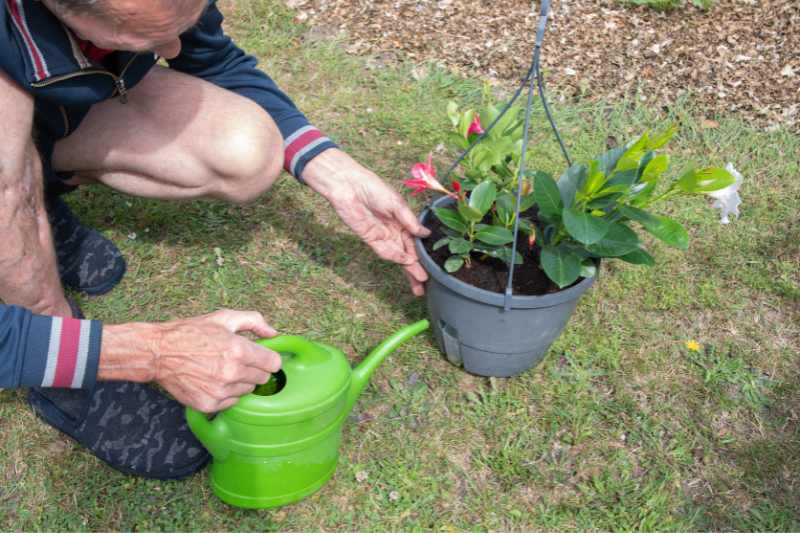
Required equipment
- Pruning shear or clean, sharp garden scissors
- Plant hormone or cutting powder (facultative)
- Pots clean
- Compost for cuttings and potting on































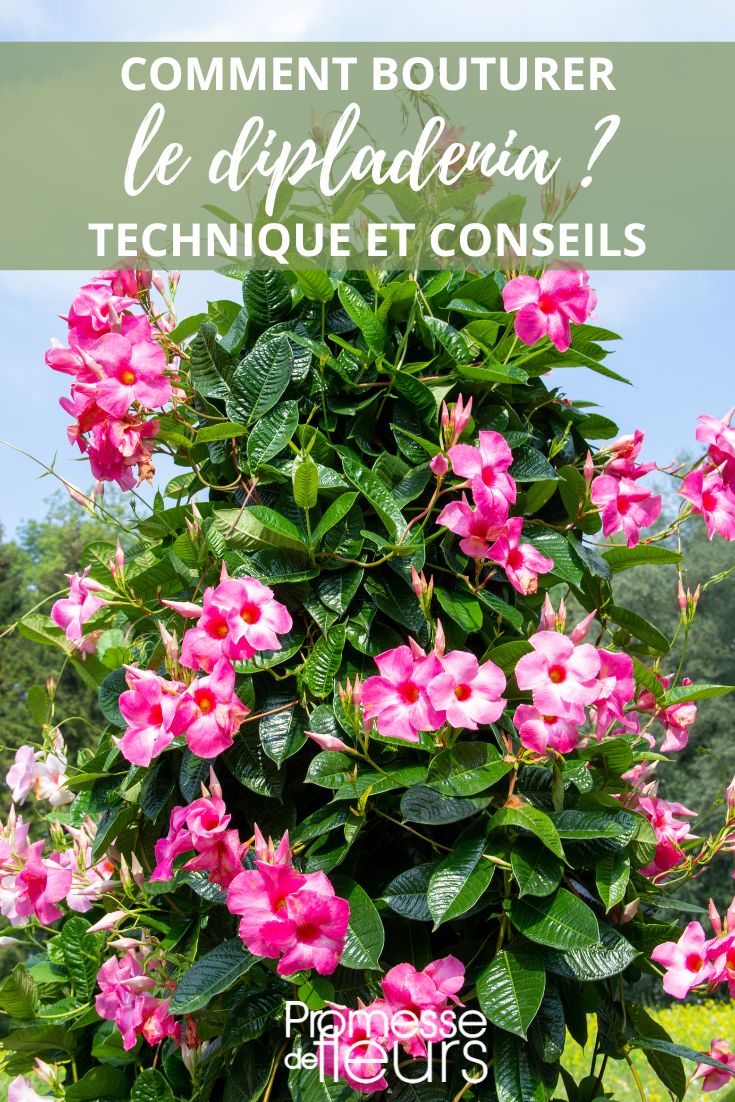
Comments